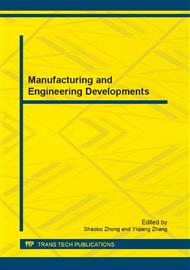p.305
p.310
p.316
p.322
p.327
p.332
p.338
p.343
p.350
Five Level Photovoltaic Grid-Connected Inverter Based on Repetitive and PI Control
Abstract:
Introducing a kind of bidirectional switch type five level inverter, and put forward the compound control scheme which repetitive control and PI adjustment are combined. This kind of control mode can enables the system has excellent static and dynamic characteristics, to improve the inverter control precision. The results show that, the five-level inverter which using repetitive PI control, its output grid-connected current waveform stability, harmonic distortion rate is small, and can real-time tracking the network voltage.
Info:
Periodical:
Pages:
327-331
Citation:
Online since:
January 2013
Authors:
Price:
Сopyright:
© 2013 Trans Tech Publications Ltd. All Rights Reserved
Share:
Citation:


